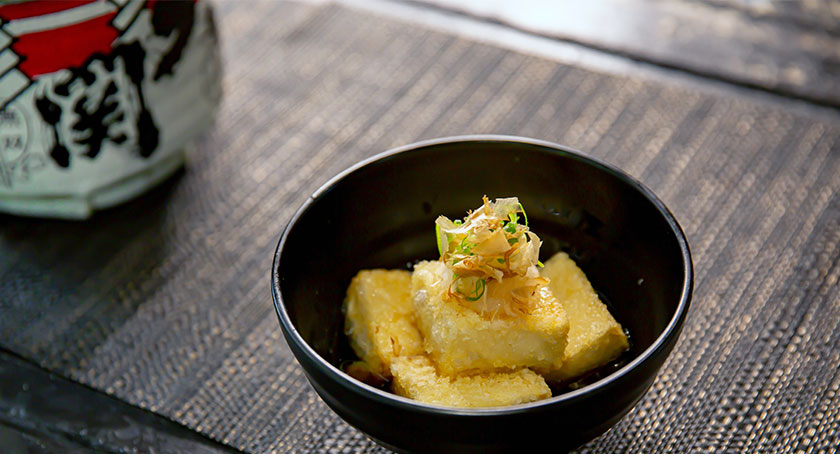Columns
Japan Insider: Japan 2007 Yearend Update
Demographic trends point to a strong potential market for non-drug products as the costs of healthcare rise and new health claim categories are explored.
By: Ron Bailey

Japan 2007 Yearend Update
Demographic trends point to a strong potential market fornon-drug products as the costs of healthcare rise and new health claim categories are explored.
By Ron Bailey
On a macroeconomic level, the Japanese economy continues to improve, in large part supported by a strong global economy in need of Japanese-produced goods and services. The “new government” that was put in place last year at this time has already been replaced, following a series of cabinet-level scandals and other missteps. This year’s new government is not expected to develop any bold new initiatives; it is seen more as an interim government that will help to restore order and relative tranquility. Plans to develop stronger relationships with Asian neighbors, particularly South Korea and China, remains a high priority but with a reduced effort for the moment. Japanese businesses prefer to maintain a low profile when possible, so the new low-key approach has the backing of leading industries in Japan.
Demographics Update
The key demographic trends—declining overall population, more people over 65 years of age, increasing longevity and reduced birth rates—all continue to evolve. Important demographics developments include the following specifics:
• The population has begun its anticipated decline, from a peak of around 127 million in 2004; it is estimated that the population will be only 100 million by 2050.
• More than one-fifth of the population is now over 65 years of age; new estimates predict two-fifths of the population will be over 65 by the year 2055.
• Birth rates continue to decline, well below the level needed to stabilize the population, a continuing trend that began over 50 years ago.
These and other demographic trends are the driving forces behind the Ministry of Health, Labor, and Welfare’s regulations of functional foods and nutraceuticals. The clear government objective is to keep the aging population as healthy as possible, for as long as possible, given the escalating costs of healthcare as people age. Healthcare costs are not yet considered “out of control” in Japan, but the annual in-creases in healthcare costs being paid both by the government’s national health program and increasingly by healthcare users are a significant cause for concern.
Regulatory Update
Qualified Health Claims. Last year at this time there was some optimism that the new regulations allowing products to make qualified health claims might lead to the development of new claims and the opening of new marketing opportunities. That has not happened, however, as the permitted claims are both complicated and confusing to consumers, and give the impression of a lack of endorsement by the Ministry of Health, Labor, and Welfare. The Japanese response seems to parallel the consumer response seen in the U.S. for most of the permitted qualified health claims allowed by the U.S. FDA—the potential claims in Japan are seen as too restrictive and too “qualified,” and not particularly relevant to consumers.
FOSHU Category Update. Many new FOSHU (Foods for Specified Health Uses) products have been approved since last year; there are now over 650 FOSHU products approved for sale with health claims. There has been a published estimate from a reliable Japanese source, indicating that the FOSHU market has grown to well over $7 billion at retail this year, up from just under $6 billion in 2005. The Japan Health Food and Nutrition Food Association is expected to provide its 2007 official biennial report on the FOSHU market in February or March of next year, a report that is eagerly awaited in the food and beverage industry in Japan. New product de-velopment and marketing plans are often revised based on the findings in this report.
One new development that has FOSHU and health claim implications is the apparent acceptance by the Ministry of Health, Labor, and Welfare of the “metabolic syndrome” concept, which is tied to the development of type II diabetes in adults. The annual National Institute of Health and Nutrition survey, in a report on data gathered in 2004 in Japan, devoted a considerable portion of that summary to metabolic syndrome risk factors. Four of the five accepted risk factors—high blood pressure, low HDL cholesterol, high blood sugar and high serum triglycerides—are already areas of permitted health claims under current FOSHU standards. The fifth risk factor, high body mass index or BMI (and large waist size), is not a direct FOSHU health claim area, but BMI data have been reported in the annual national nutrition surveys for many years.
Ingredient trade shows in Japan have recently begun to highlight functional ingredient technologies focused on metabolic syndrome risk factors. The November Health Ingredients Japan 2007 show in Tokyo, for example, hosted a “Metabolic Syndrome Corner” to highlight the new developments in this important area.
Not-Quite FOSHU. It was expected that by now at least one new health claim category would have been approved by the Ministry. A consortium of Japanese food, beverage and pharmaceutical companies, along with at least two universities and two large trading companies, have been working on providing scientific support for a new “anti-fatigue” FOSHU category. Biomarkers have been developed, functional ingredients have been identified and tested for safety and efficacy—including co-enzyme Q10, astaxanthin, branched chain amino acids and L-carnitine, for example)—and limited non-FOSHU retail marketing experience has been gained with products formulated with these functional ingredients. The consortium coordinators had indicated earlier this year that perhaps four to six new “anti-fatigue” FOSHU products would be on the market by now. Unfortunately, that has not happened, as the Ministry has not (yet) formally approved the category. It is generally believed in Japan that the Ministry is not sufficiently comfortable with the supporting data, which is consistent with its normal conservative approach when regulatory changes are made. The “anti-fatigue” FOSHU activity has certainly slowed, as companies await clarifications from the Ministry and the development of new supporting data.
The delay in the “anti-fatigue” FOSHU category approval is expected to also slow down a less-formal but parallel effort to develop science in support of FOSHU status for immune function enhancement. There is considerable commercial product activity in this area, and has been for several years, although without legal on-label claims. There is also significant consumer interest in legitimate non-drug products in this area, particularly those supported by positive clinical test results.
Expectations for the Future
As long as the key demographic trends continue as anticipated, the Japanese government will continue to place a high priority on developing a regulatory framework that will balance the health needs and interests of consumers with an assurance that the permitted products are safe to consume. So far, the FOSHU approach has been a resounding success on both counts. If the permitted FOSHU categories can be expanded to include new health claims categories in the future—fatigue/stress, immune function, weight management and anti-allergy, to name a few—consumers in Japan will be well-served and the government will perhaps be better able to help control the escalating costs of healthcare. NW
Note: Important public sources of information for this article are the “National Health and Nutrition Survey in Japan, 2004,” and the translated FOSHU approval lists from the Japanese Health Food and Nutrition Food Association.




















